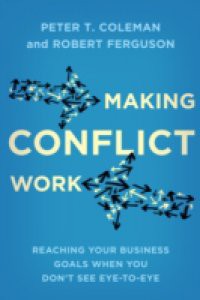Work conflict is risky. It can go bad and poison employee health, work relationships and organizational climates, or it can go well and help to energize problem solving, innovation and bottom-line effectiveness. Managing conflicts up and down the chain of command at work can be particularly treacherous, as power differences complicate conflicts and constrain response options. Organizations are rife with stories of executives and managers who abuse their power, employees who overstep their authority, and the resulting conflicts that get stuck in downward spirals. When people find themselves in conflict, they immediately become aware of the balance of power in the situation or relationship: 'Hey, you work for me, so back off!', or 'Wow, he is much bigger and drunker than I thought he was before I told him to shut up', so understanding how conflict and power affect each other is vital to effective conflict management.In Making Conflict Work, Peter Coleman and Robert Ferguson, leading experts in the field of conflict resolution, address the key role of power in workplace tension. Coleman and Ferguson explain how power dynamics function and provide step-by-step guidance to determining your standing in a conflict and identifying and applying the strategies that will lead to the best resolution. Drawing on the authors' years of research and consulting experience, Making Conflict Work offers seven new strategies and dozens of tactics for negotiating disputes at all levels of an organization. This powerful approach can turn workplace tensions into catalysts for creativity, innovation, and meaningful change.

